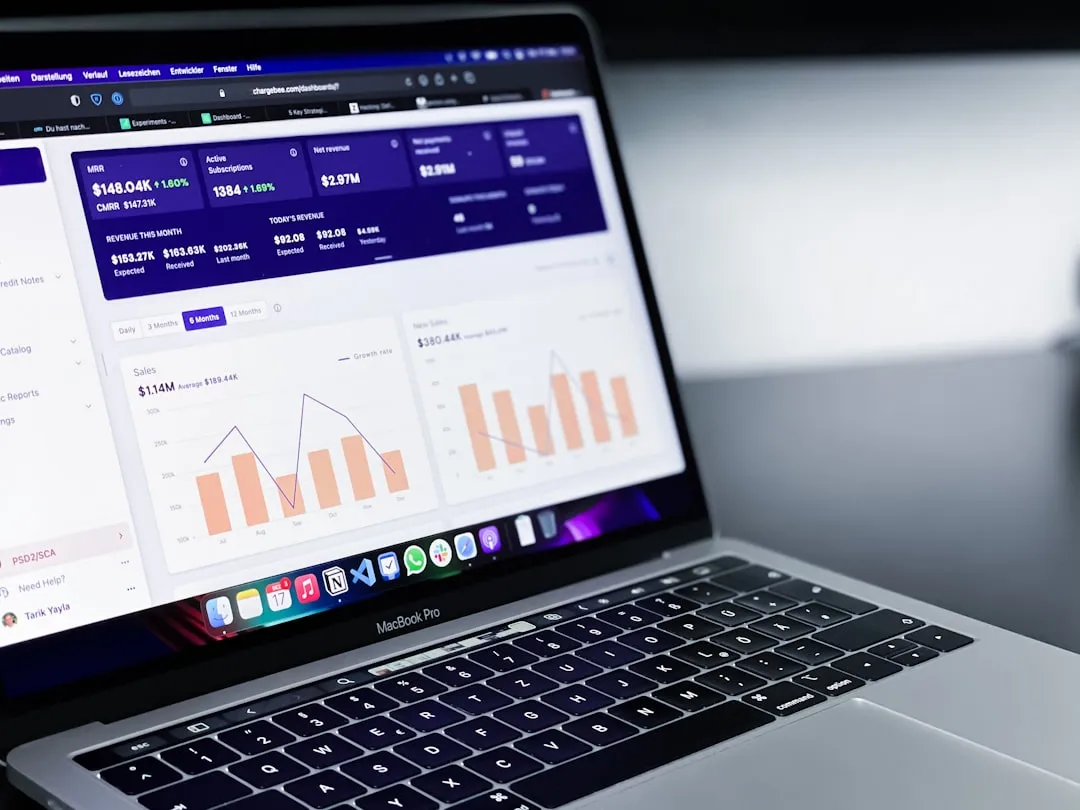For small business owners, the marketing world can feel like a casino where you’re forced to bet your hard-earned money without knowing the odds. You’re investing in lead generation—running ads, creating content, maybe even hiring help—but when it comes time to justify the expense, the results feel fuzzy. Are your efforts actually making money, or just noise? This struggle to prove the value of marketing is a constant source of stress, leading to wasted budgets and missed growth opportunities. Many businesses find themselves trapped in a cycle of spending without a clear understanding of its financial return.
The core problem is that without a reliable way to measure success, marketing becomes an expense, not an investment. Calculating your lead generation ROI for small business is the single most important step you can take to break this cycle. It transforms your marketing from a cost center into a predictable growth engine, allowing you to make strategic decisions based on data, not guesswork. This comprehensive guide will equip you with a step-by-step framework to accurately calculate lead generation ROI, interpret the results, and leverage these insights to optimize your marketing strategies for maximum profitability. We'll also explore how tools like AXZ Lead can streamline this process, turning complex calculations into clear, actionable intelligence.

Why Lead Generation ROI Matters More Than Ever for Small Businesses
In today's competitive landscape, simply getting clicks and impressions isn't enough. Small businesses need to move beyond these vanity metrics to understand the true business impact of their marketing. Lead generation ROI is the bridge between your marketing activities and your bottom line.
Beyond Vanity Metrics: Moving to True Business Impact
It’s easy to get caught up in metrics like website traffic, social media likes, and email open rates. While these can indicate engagement, they don’t pay the bills. The crucial difference lies in understanding engagement versus conversion. A high-traffic blog post is great, but its real value is determined by how many of those readers convert into paying customers. Calculating ROI forces you to focus on the metrics that directly contribute to revenue.
Strategic Resource Allocation: Know Where to Spend Your Budget
When you know your ROI, you can make informed decisions about where to allocate your limited resources. By tracking the ROI of each marketing channel—be it Google Ads, content marketing, or social media—you can identify which channels are your high-performers and which are draining your budget. This allows you to double down on what’s working and cut the campaigns that aren’t delivering, ensuring every marketing dollar is spent effectively.
Proving Value & Justifying Investment
For many small businesses, the marketing budget is the first to be cut during lean times. A clear ROI calculation is your best defense. It demonstrates marketing's direct contribution to the bottom line, making it easier to justify your current budget and secure future investment. When you can show stakeholders that for every dollar invested in lead generation, you generate five dollars in return, marketing is no longer seen as an expense, but as a critical driver of growth.
Adapting to a Dynamic Digital Landscape
The digital marketing world is in constant flux, with algorithm updates from Google and shifting consumer behaviors. Measuring ROI helps your business stay agile and responsive. If a previously profitable channel sees a sudden drop in ROI, it’s an early warning sign that you need to investigate and adapt your strategy. This continuous feedback loop is essential for long-term success.
💡 Key Takeaway
Calculating lead generation ROI is not just about numbers; it’s about transforming your marketing into a predictable, data-driven growth engine that is resilient to market changes and accountable to your business goals.
The Fundamentals: What is Lead Generation ROI?
At its core, Return on Investment (ROI) is a simple concept: it measures the profitability of an investment. In the context of lead generation, it tells you how much revenue you’ve generated for every dollar you’ve spent on your marketing and sales efforts. It’s more than just a percentage; it’s a direct link between your leads and your revenue.

Key Components of Lead Generation ROI
- Total Revenue Generated from Leads: This is the total value of all sales that can be directly attributed to your lead generation efforts.
- Total Cost of Lead Generation: This includes all direct and indirect costs associated with acquiring those leads.
Common Pitfalls in ROI Calculation
Many small businesses struggle with accurate ROI calculation because they overlook key factors. Common pitfalls include ignoring indirect costs like salaries, poor lead tracking that makes it impossible to connect sales to specific campaigns, and challenges with attribution in a multi-channel marketing world.
Step-by-Step: How to Calculate Lead Generation ROI
Here’s a practical, step-by-step guide to calculating your lead generation ROI accurately.

Defining Your Lead Generation Costs
To get a true picture of your ROI, you must account for all associated costs, both direct and indirect.
- Direct Costs: These are the most obvious expenses, such as your monthly spend on Google Ads, Facebook ads, your subscription fees for a CRM or email marketing platform, and any fees paid to a lead generation service like AXZ Lead.
- Indirect Costs: These are often overlooked but are just as important. They include the salaries of your marketing and sales team members, the cost of content creation (e.g., hiring a writer or designer), website hosting and maintenance, and software licenses.
- Fixed vs. Variable Costs: Categorize your expenses into fixed costs (e.g., salaries, software subscriptions) and variable costs (e.g., ad spend) for a clearer analysis.
✅ Pro-Tip
Create a simple spreadsheet to track all your lead generation costs on a monthly basis. This will make your ROI calculation much easier and more accurate.
Measuring Revenue Generated from Leads
This is often the most challenging part of the ROI equation. It requires robust systems for tracking leads as they move through your sales funnel.
- Lead Tracking & Management: A Customer Relationship Management (CRM) system is essential. It allows you to track each lead from its initial source to the final sale, ensuring you can attribute revenue to the correct marketing campaign.
- Attribution Models: How do you give credit for a sale when a customer has multiple touchpoints with your brand? Attribution models help with this. While complex models exist, a simple “last-touch” attribution (giving credit to the last marketing touchpoint before the sale) is a good starting point for most small businesses.
- Customer Lifetime Value (CLTV): For businesses with recurring revenue, like SaaS companies or service-based businesses, looking at the initial sale is not enough. You should consider the Customer Lifetime Value (CLTV), which projects the total revenue a customer will generate over their entire relationship with your business. For expert guidance on setting up effective lead tracking, consider our B2B lead generation services.
The Core Lead Generation ROI Formula
The formula itself is straightforward:
(Revenue Generated from Leads - Cost of Lead Generation) / Cost of Lead Generation * 100
Let’s walk through a simple example. Imagine a local plumbing company spends $1,000 on a Google Local Services Ads campaign in one month. This campaign generates 10 new jobs, and the average value of each job is $500. The total revenue generated is 10 * $500 = $5,000.
The ROI would be: `(($5,000 - $1,000) / $1,000) * 100 = 400%`
This means for every $1 spent on the campaign, the company generated $4 in return.
Interpreting Your ROI Results
A positive ROI is always the goal, but what constitutes a “good” ROI can vary. A 400% ROI is excellent, but even a 50% ROI might be acceptable depending on your profit margins and business goals. It’s important to monitor your ROI over time and look for trends. Is it increasing or decreasing? This will help you understand the long-term health of your marketing efforts.
Get Your Free Lead Generation ROI Calculator!
Ready to take control of your marketing spend? Contact us to request our exclusive AXZ Lead Generation ROI Calculator Spreadsheet. It simplifies the entire process, helping you track costs, measure revenue, and calculate your ROI with ease.
Request NowAdvanced Metrics to Complement Your ROI Calculation
While ROI is the ultimate measure of success, other metrics provide valuable context and help you understand the efficiency of your campaigns.

- Cost Per Lead (CPL): This measures how much it costs to acquire a single lead. For a detailed analysis of B2B CPL benchmarks, check out our dedicated article.
- Lead Conversion Rate: This is the percentage of leads that take a desired action, such as filling out a form or making a purchase.
- Customer Acquisition Cost (CAC): This is the total cost of sales and marketing to acquire a new customer.
- Lead Velocity Rate (LVR): This measures the month-over-month growth of your lead pipeline, indicating the health and momentum of your lead generation efforts.
Optimizing Your Lead Generation Strategy for Better ROI
Calculating ROI is just the first step. The real power comes from using these insights to continuously improve your strategy.

Leveraging Data Analytics and A/B Testing
Use tools like Google Analytics to track user behavior on your website and A/B testing tools to experiment with different headlines, ad copy, and calls-to-action. Small, iterative changes can lead to significant improvements in your conversion rates and overall ROI.
Improving Lead Quality and Qualification
It’s not just about getting more leads; it’s about getting the *right* leads. Define your Ideal Customer Profile (ICP) and implement a lead scoring system to prioritize the most promising prospects. This is where a service like AXZ Lead can provide immense value. Our proprietary lead qualification processes ensure you’re only spending time on high-quality leads, which naturally helps to optimize marketing spend.
Refining Your Sales Funnel & Nurturing Process
How do you handle leads once they come in? A well-defined sales funnel and lead nurturing process are crucial for maximizing conversions. For more on this, explore our articles on sales funnel metrics.
Conclusion: Take Control of Your Marketing Spend
Calculating how to calculate lead generation ROI for small business is not just an accounting exercise; it’s a fundamental shift in how you approach marketing. It empowers you to move from hopeful spending to strategic investment, ensuring every dollar you put into your marketing is working hard to grow your business. By implementing the steps outlined in this guide, you can take control of your marketing budget, prove the value of your efforts, and build a sustainable engine for growth.
Ready to take control of your lead generation performance? Download our exclusive AXZ Lead Generation ROI Calculator Spreadsheet today and start making data-driven decisions! For deeper insights into specific lead generation costs, read our article on B2B cost per lead. Or, discover how our B2B lead generation services can tailor strategies for your unique business needs.
Frequently Asked Questions
Q1: What is a good lead generation ROI for a small business?A1: A "good" ROI varies significantly by industry, business model, and profit margins. Generally, a positive ROI is desirable, but benchmarks can range from 2:1 to 5:1 or even higher. It's crucial to compare against industry averages and your own historical performance.
Q2: How often should I calculate my lead generation ROI?A2: Ideally, you should calculate ROI monthly or quarterly for most campaigns to track performance trends and make timely adjustments. For longer sales cycles, quarterly or bi-annual reviews, supplemented by interim metrics like CPL, are more appropriate.
Q3: What if my lead generation ROI is negative?A3: A negative ROI indicates that your costs outweigh the revenue generated. This isn't necessarily a failure but a signal to critically analyze your campaigns. Review your costs, lead quality, conversion rates, and sales process to identify bottlenecks and optimize.
Q4: Can I calculate ROI for brand awareness campaigns?A4: Directly calculating monetary ROI for pure brand awareness campaigns can be challenging, as their impact is often indirect and long-term. However, you can use proxy metrics like increased website traffic, improved brand mentions, social engagement, and eventually, how these correlate with future lead generation and sales to infer value.
Q5: How can AXZ Lead help improve my lead generation ROI?A5: AXZ Lead specializes in generating high-quality, qualified leads, reducing your effective Cost Per Lead (CPL) and improving conversion rates. Our targeted strategies and advanced analytics help you identify the most profitable lead sources, ensuring a better return on your lead generation investment.




